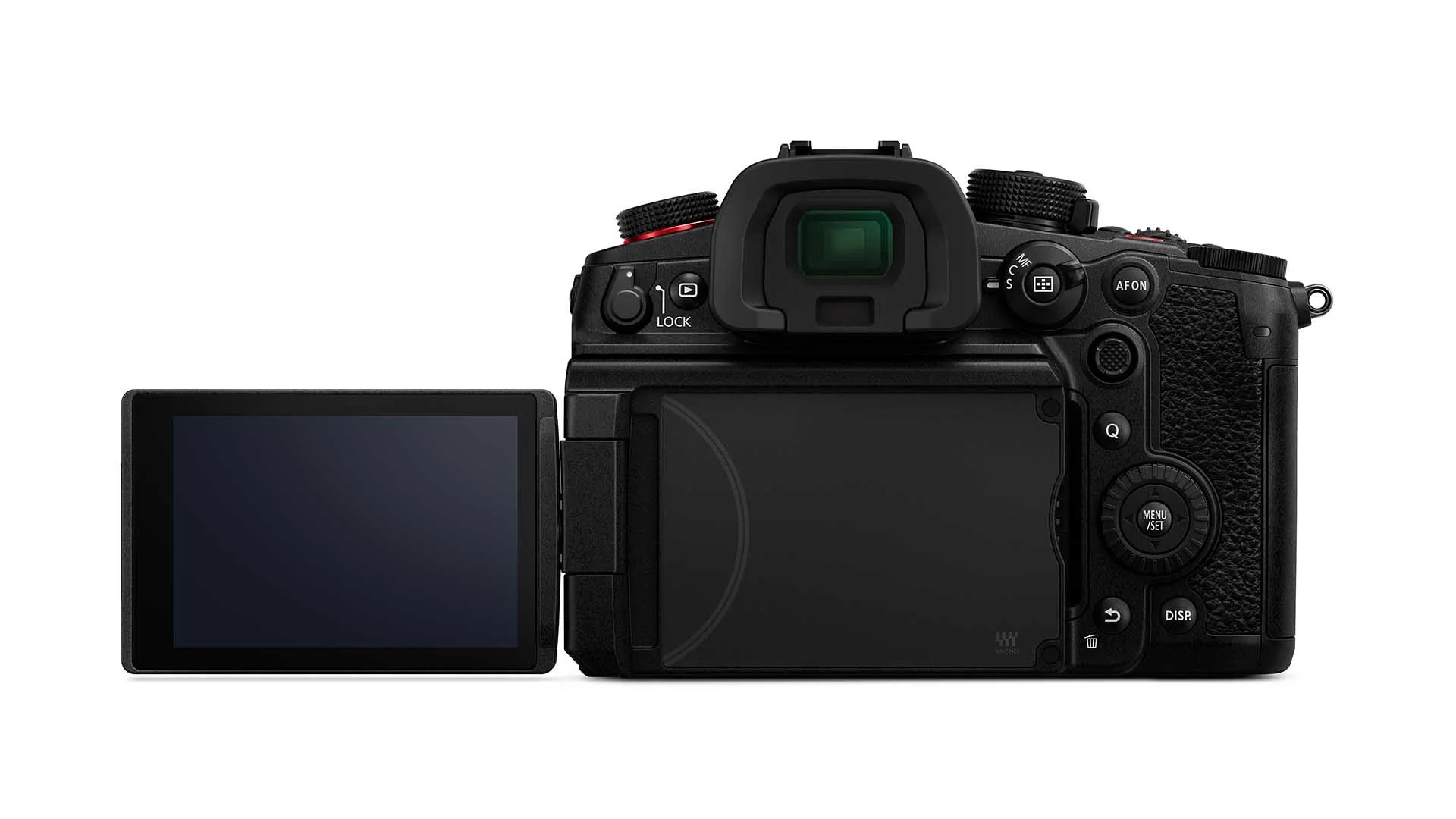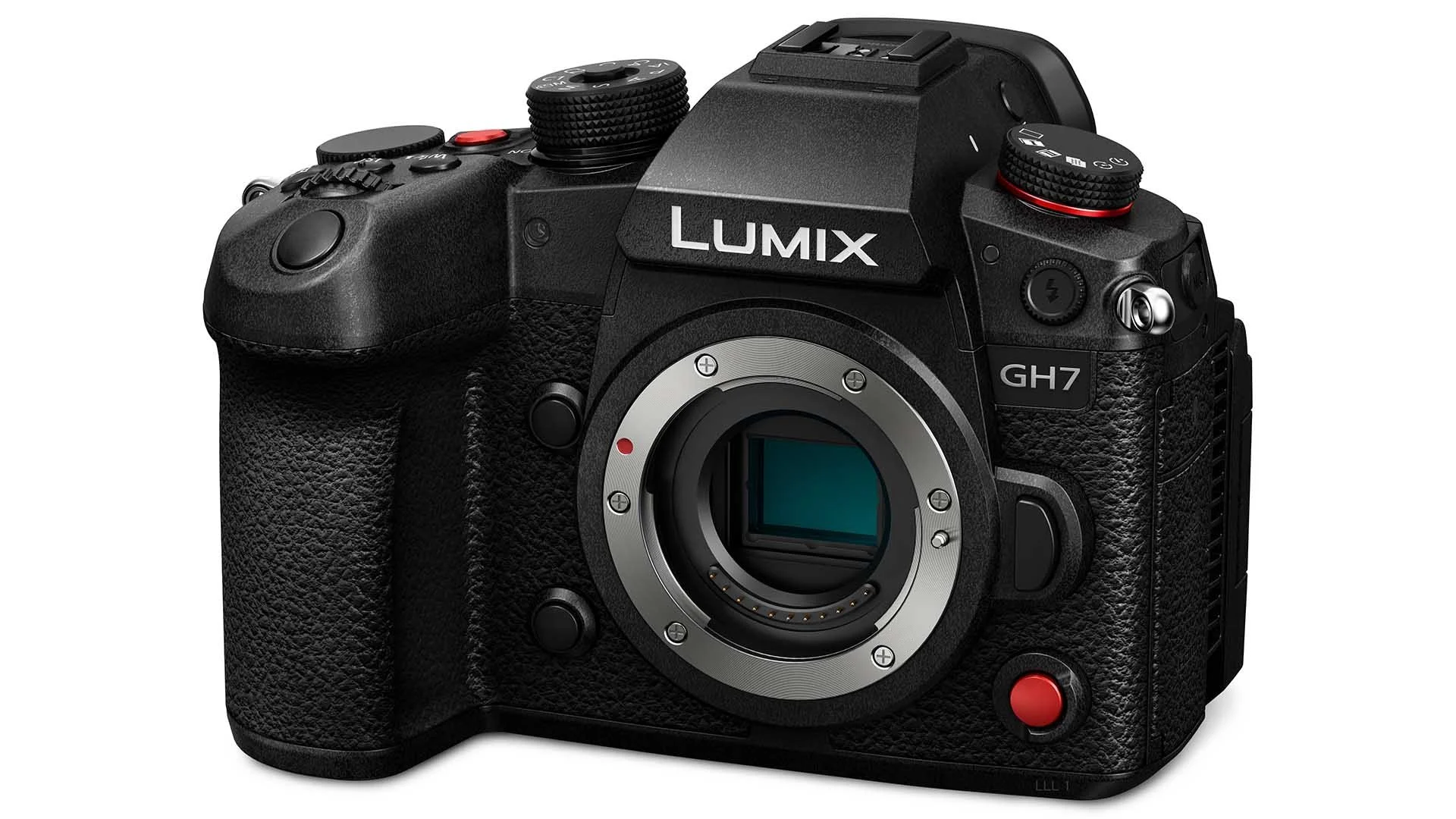Panasonic Lumix GH7 Price, Specs, Availability Announced
Panasonic's Lumix GH series of Micro Four Thirds cameras have a strong reputation amongst videographers, especially those working alone or in small teams. Now the latest model, the Panasonic Lumix GH7 is set to take things to another level with a newly developed 25.2MP BSI CMOS sensor and improved autofocus performance that uses phase detection technology and subject detection.
Designed for professional use and with filmmakers in mind, the Lumix GH7 can record Apple ProRes RAW footage internally and has 32-bit float audio recording. The latter is a world first that should eliminate the need to adjust recording levels during shooting using Panasonic’s new XLR microphone adapter, DMW-XLR2 (sold separately).
Although it’s a Micro Four Thirds camera, the Lumix GH& is still fairly large.
The GH7’s new 25.2MP BSI CMOS sensor is capable of outputting 5.7K 30p ProRes 422 HQ and ProRes RAW HQ video in 29.97P 25P 24P and 23.98P, plus Cinema 4K Pro Res RAW HQ, Pro Res RAW in 59.94P, 50P, 29.97P, 25P, 24P and 23.98P. Also, like the GH6, the Lumix GH7 offers 5.7k 60P internal video recording and 5.8K 30P Open Gate internal recording. Open Gate means the whole sensor is used to record the 5.8K footage, giving better scope for cropping to different aspect ratios post-capture.
The Panasonic Lumix GH7 has a vari-angle touchscreen.
The GH7 also well caters to fans of slow-motion video, with 4K 4:2:0 10-bit recording at up to 120P and Full HD high-frame rate recording in 4:2:2 10-bit at up to 240P. There's also 10-bit Full HD recording at up to 300fps in variable frame rate mode.
With all this high-end video capability, it's good know that the GH7 has a built-in fan and a heat-dissipating chassis. This enables unlimited recording, even of internal Pro Res RAW footage, provided that you have the power and storage capacity. If needed, the GH7 can record directly to a tethered SSD.
Users can also use the pre-installed V-log for over 13 EV of dynamic range or load and apply custom LUTs directly to their videos and photos using the real-time LUT feature. The new Lumix Lab app introduced with the Panasonic Lumix S9, makes it easy to create and upload LUTs to the GH7.
Read our Pansonic Lumix S9 review
For efficient workflows, the GH7 offers proxy recording and native Camera to Cloud integration with Adobe Frame.io, enabling automatic uploads and collaborative editing.
The Lumix GH7 is the first GH camera to feature a hybrid phase detection autofocus system. It also gets enhanced subject detection that enables it to detect the front of a variety of vehicles or the driver's helmet for more accurate focusing.
Panasonic has also given the Lumix GH7 enhanced image stabilisation technology, with perspective distortion correction for videos and High mode in Active I.S. for better shake reduction when shooting on the move.
The Panasonic Lumix GH7 can accept Micro Four Thirds lenses from a range of manufacturers including Panasonic and OM System (formerly Olympus).
Panasonic Lumix GH7 Price and Availability
The Panasonic Lumix GH7's price will be £1999.99 and it will go on sale at the end of July 2024. The Lumix DMW-XLR2 will be available at the end of July 2024, at a price of £499.99.
Panasonic Lumix GH7 Specifications
Camera type: Mirrorless Micro Four Thirds
Announced: 5th June 2024
Sensor: 25.2MP BSI CMOS sensor (17.3 x 13.0 mm)
Key video resolutions: [5.8K] 5760x4320 (4:3), [5.7K] 5728x3024 (17:9), [4.4K] 4352x3264 (4:3), [C4K] 4096x2160, [4K] 3840x2160
Video formats: Mov, MP4, ProRes
Autofocus system: Hybrid system combining Phase Detection and Contrast AF detection
Subject detection: Human / Animal / Car / Motorcycle / Train / Airplane
HDMI port: Full-size
Sensitivity (ISO): Stills: Normal Auto / 50 (Extended ISO) / 100-25600, V-Log Auto / 125 (Extended ISO) / 500-1280, Video: Normal Sensor output is 60fps or less (Base ISO 100): Auto / 50 (Extended ISO) / 100-12800, Sensor output is 61fps or higher (Base ISO 100): Auto / 50 (Extended ISO) / 100-3200 / 4000-12800 (Extended ISO), V-Log Sensor output is 60fps or less (Base ISO 500): Auto / 125-400 (Extended ISO) / 500-12800, Sensor output is 61fps or higher (Base ISO 250): Auto / 125-200 (Extended ISO) / 250-3200 / 4000-12800 (Extended ISO), Hybrid Log Gamma Sensor output is 60fps or less (Base ISO 250): Auto / 250-12800, Sensor output is 61fps or higher (Base ISO 250): Auto / 250-3200 / 4000-12800 (Extended ISO)
External USB-SSD recording: Yes
Video streaming: Yes, via Wi-Fi, USB or wired LAN
Viewfinder: 3.68-million-dot OLED with 120/60fps refresh rate
Rear screen: 3-inch 1.84-million-dot vari-angle touch-sensitive LCD
Weather-sealed: Yes
Dimensions (W x H x D): 138.4 x 100.3 x 99.6 mm / 5.45 x 3.95 x 3.92 inch body only, excluding protrusions
Weight: 805g / 1.77 lb including hot shoe cover, battery and SD Card but excluding body cap




